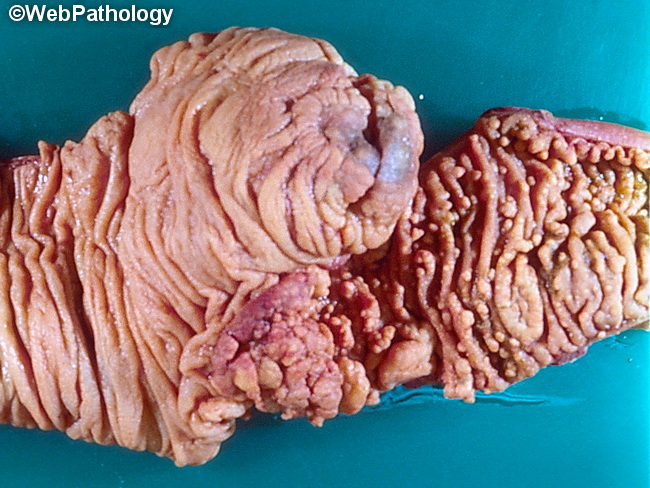FAP : Upper GI Lesions


Comments:
Upper Gastrointestinal Tract Lesions in Familial Adenomatous Polyposis (FAP): Patients with FAP develop lesions elsewhere in the GI tract, including polyps in stomach and small intestine. Gastric Polyps: Gastric polyps occur in 30% to 100% of cases and are fundic gland type. They appear as 1 to 5 mm sessile lesions early in life. They may appear even before colon polyps. Epithelial dysplasia is seen in 25% to 40% of cases. Gastric adenomas are rare and seen in <5% of FAP patients. Gastric adenocarcinomas arising in these adenomas is even rarer in the US. Microcarcinoids have been reported in the stomach in a setting of FAP. Small Intestinal Adenomas: FAP patients can develop adenomas of the small intestine with following frequencies: duodenum (60 to 90%), jejunum (40%) and ileum (20%). Duodenal adenomas occur around periampullary region and can block bile or pancreatic ducts causing acute pancreatitis. The patients are at increased risk of duodenal adenocarcinoma (4% to 12% lifetime risk) which is the major cause of mortality in patients who have undergone prophylactic colectomy.



